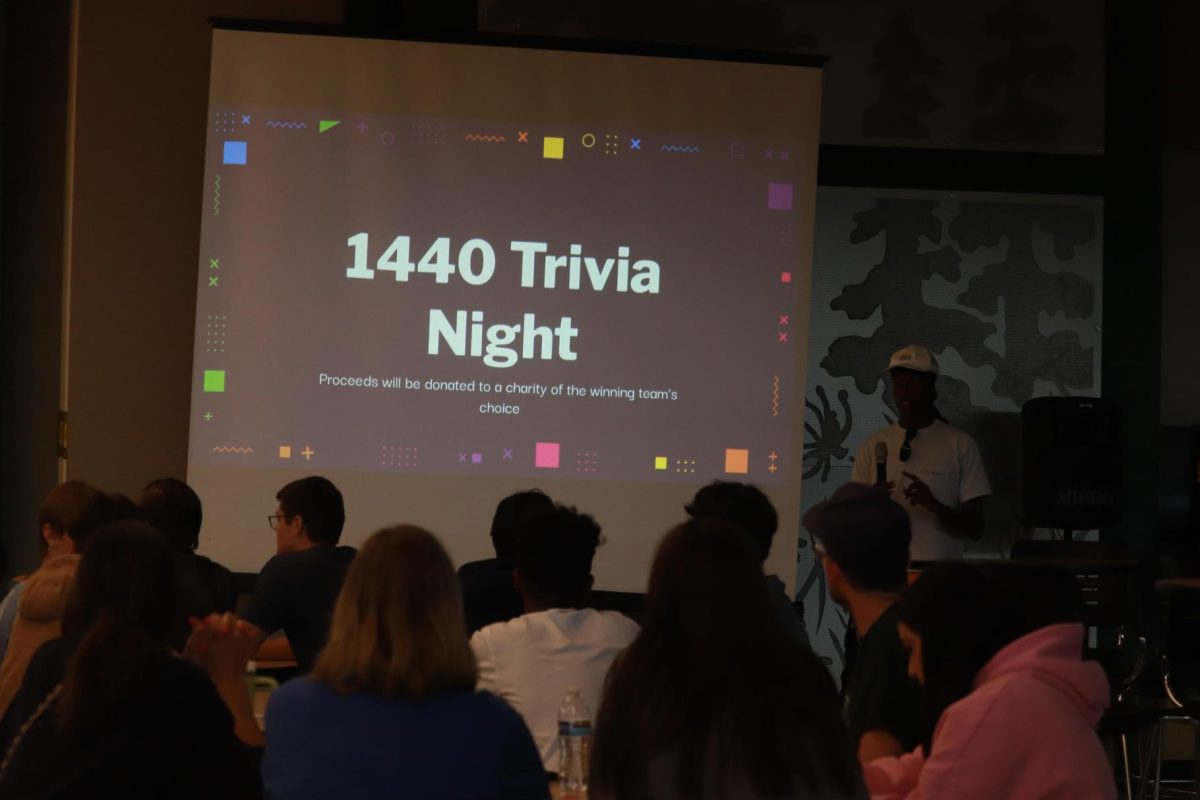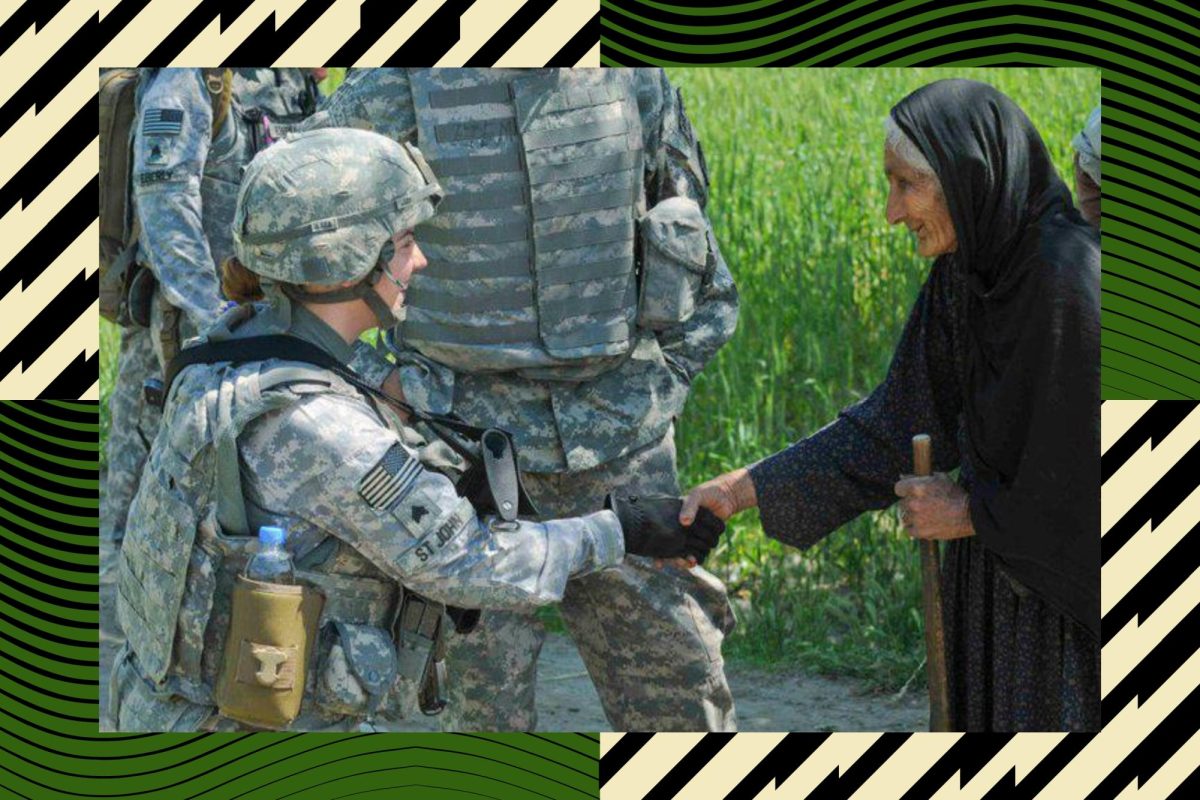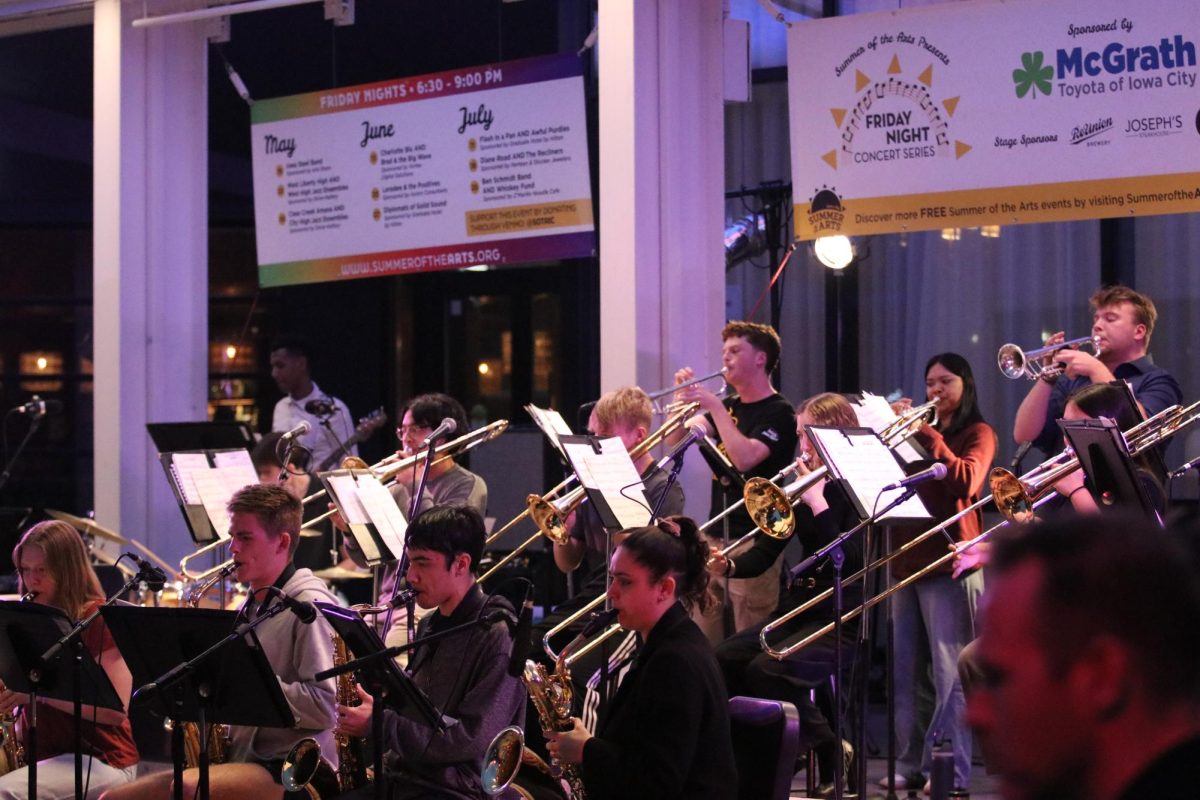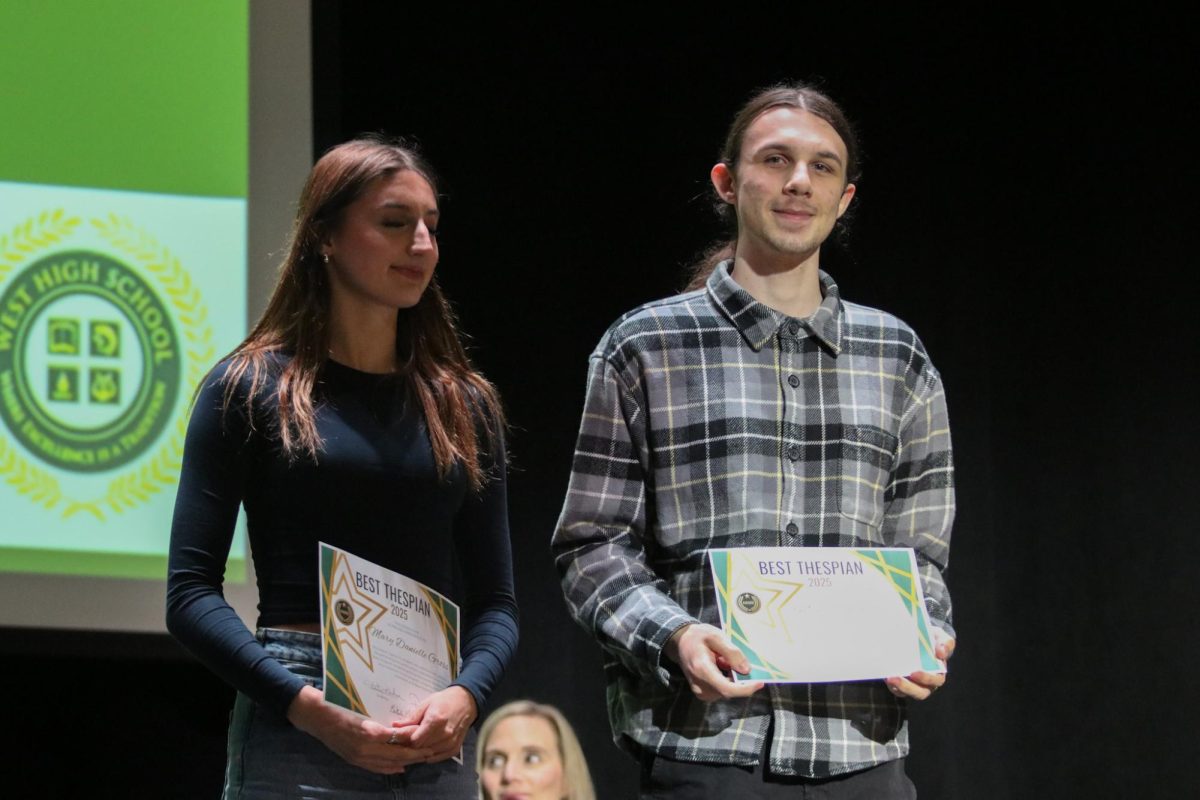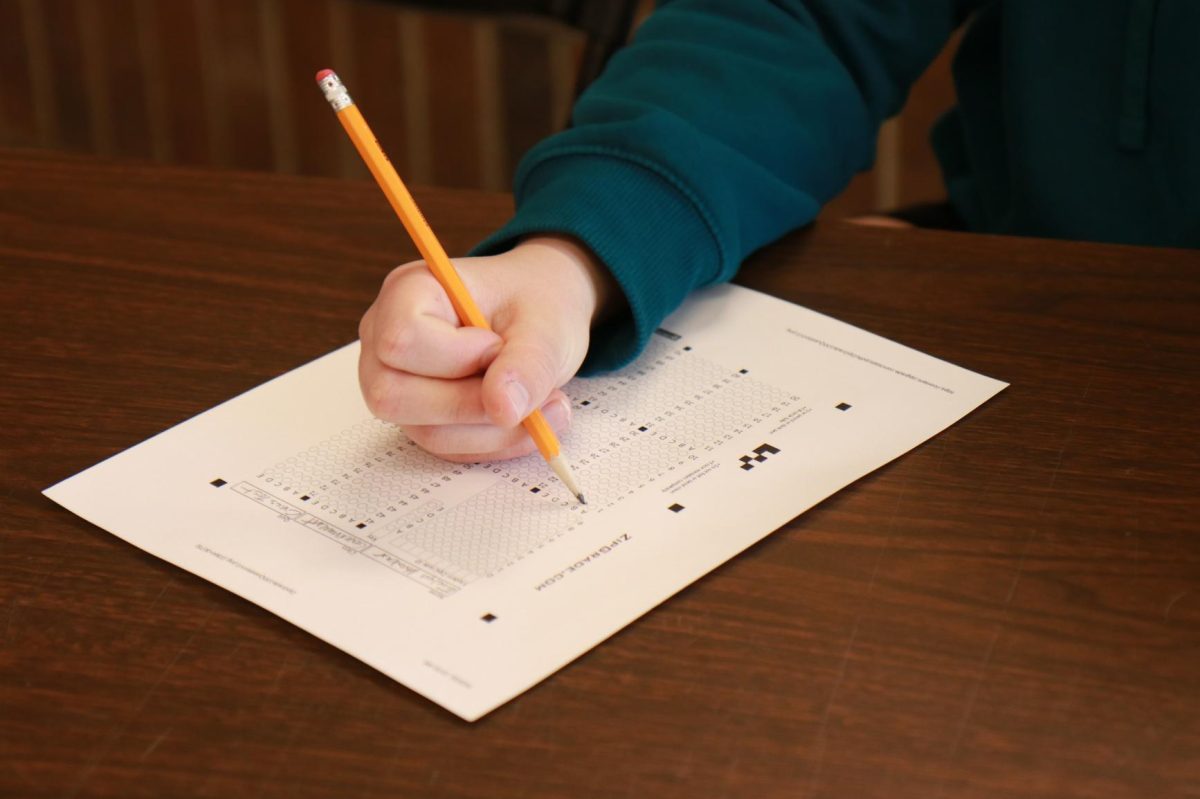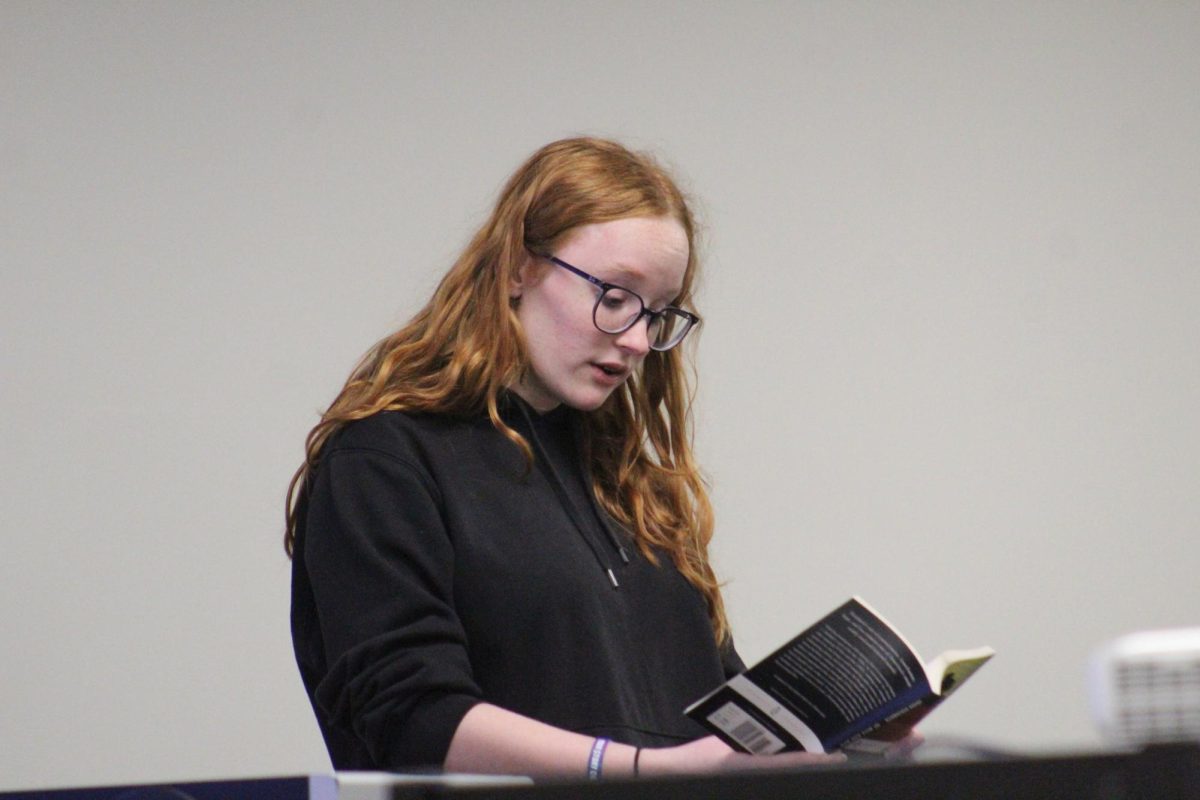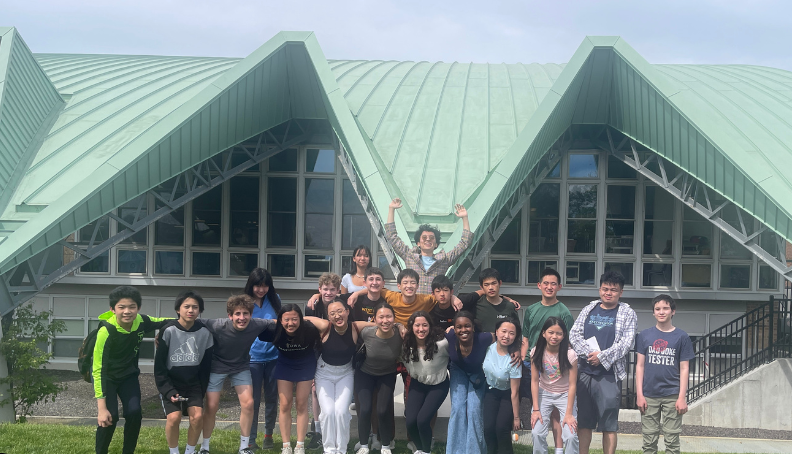


At a time when no one can seem to agree about the future of the Iowa City Community School District, there was relatively little contention at the forum held Sept. 8 from 7-9 p.m. for the candidates running for the ICCSD School Board. The forum focused on redistricting, and was the final public discussion of four held prior to Election Day. Elections will be held locally next Tuesday, Sept. 13. There are ten total candidates running to fill five open seats, one for a two-year term to finish current board member Mike Cooper’s term after he steps down, and four for a full four-year term. Karla Cook and Julie Van Dyke are running for the two-year term and Jeff Alden, Patti Fields, Phil Hemingway, Sally Hoelsche, Jeff McGuinness, Robert Porter, James Tate and Marla Swesey are running for the four-year terms. During the forum, a moderator asked a question and each candidate was given a minute to answer. Questions from the audience – composed of 30-50 people, including West and City High principals Jerry Arganbright and John Bacon – could be submitted.
All of the candidates argued in favor of neighborhood schools – and against busing kids to distant schools or consolidating schools into bigger ones. Common themes included the idea that the district should move the resources, not the students, to increase equity in learning, and advocacy of increased focus on the individualized nature of learning. See below for a more in-depth summary of the stances of each candidate:
*NOTE: Information in the table represents a summary of the candidates’ positions based on their responses to questions at the redistricting forum held at West High School Sept. 8.
| Jeff Alden | Karla Cook | Patti Fields | Phil Hemingway | Sally Hoelsche | Jeff McGuinness | Robert Porter | James Tate | Marla Swesey | Julie Van Dyke | |
| Expanding to a third comprehensive high school, fourth junior high, etc. | We should build a new high school in the Coralville and Noth Liberty area to accommodate increasing students in that area. The 7-9 grade junior high option is interesting. | 3,300 students are currently enrolled in high school in the ICCSD and there is capacity for 3,400, so a new high school could put West and City below capacity. | 3,750 students is the trigger point for building a third high school. We should use our current resources up to capacity before expanding and have short, middle, and long term goals to accommodate growth. The partnership with Kirkwood would help.q | We should use what we have and recognize that we have three great high schools [West High, City High, and Tate High] | We should look in to expanding the junior highs, but currently the numbers don’t support building a new high school. | All of the options are worth consideration and there is no answer. We need to look into what the new high school would be and where the resources would come from to build and maintain it. | We should use our current resources – one high school is not even at capacity. A third high school is not even in the long-term plan. | We should use our current high schools effectively. We should look into expanding to a fourth junior high – but keep exploring. | It’s inevitable that we need a new high school because of growth rates. We should look into a 7-9 grade junior high. I’m not ready to make a decision yet. | A 7-9 grade junior high would not only mitigate overcrowding, it would be safer for 9th graders. We should not expand the current high schools beyond their current sizes and should consider taking sections of West out and giving them to City. |
| Refurbishing old schools vs. building new | No mega schools, we should stay small and local. We shouldn’t remove the neighborhood center | We should keep old schools and buildings for as long as possible and fix things that need to be fixed. We should keep schools very small (under the 506 student capacity for elementary schools) | Refurbishing old schools must be addressed individually, we should build schools where people are | Bigger isn’t better, we shouldn’t expand out but rather keep schools in neighborhoods | We need long-term plans to maintain old buildings. Schools are the hub of a community and shouldn’t move out. | There is a lot of value in the small school culture. When we go for bigger and better we lose the at-home community. | We should use old buildings to their best capacity. They are built as the hub of the community. | We should keep small community schools and develop a plan for their maintenance. Infrastructure is easier to replace than to create new. | We should keep buildings maintained and updated for access and technology so they don’t become unfixable. We should retain neighborhood schools. | Keep old schools as long as possible, and if rebuilding is necessary, don’t change locations or build mega-schools. Insist that the community has input on rebuilding the school. |
| The School Board’s influence on zoning | The board should be involved to absorb and influence decisions about city planning and make personal connection. | There should be a liaison between the board and the city council. It could be a conflict of interest to get involved, but we should absorb information. | Partnerships and collaboration are essential. The school board’s perspective can help to identify the zoomed-out effects of a policy. | We should be involved from the get-go because we’re charged with the task of educating each new child. | Collaboration benefits everyone and we should all work to plan ahead. | There should be regular discussions the city council and the school board. There should be small, informal sessions to give the board information to do long-term planning. | There should obviously be communication to enable planning ahead. | The board should reach out to the city council and board of supervisors, be present at meetings, and understand information to use in the plan. | It’s important to have good communication with the council in order to be proactive and not reactive. We should attend city council meetings as ambassadors. | The board and city council should communicate with each other and not be adversarial. They should meet as a committee and not be adversarial. |
| Redistricting school boundaries(when and using which criteria) | You can’t achieve a completely equal balance. It’s more important to put schools in the right locations so that they are not elitist to and give students a choice. | We shouldn’t redistrict based on diversity. It’s most important to keep schools in neighborhoods and to keep all schools offering excellent programs. We should provide more events to get different schools together to meet other students. | We should have a clear direction and clear options in terms of redistricting. We should redistrict based on distance and keep kids at schools in their neighborhoods – redistricting shouldn’t be based creating a socioeconomic and cultural mix. All schools must be treated individually. | We should not use an outside consultant to redistrict. Every possible mistake we could have made last time we tried to redistrict, we did. Every student is a special case and we should treat all schools individually. Kids should go to school within walking distance of their house when possible. We should move funds, not students. | Redistricting should happen on a regular basis and we should make long-term redistricting plans by listening to community input. We should look at the big picture, and while diversity is important, we shouldn’t bus kids to achieve it, and it is most important to give each student the opportunity to achieve and provide resources to all schools. | We should explain that no matter where kids end up, they will have a fine education. We should get community support before the proposal is passed and have larger community input in the process. Schools in close distance to students is more important than creating diversity, and while redistricting should happen regularly, maintaining safety and stability for each student is also important. | We shouldn’t bus to create diversity. We should seek to give all students equal opportunity, and diversity is just a small factor. There should be community input on redistricting. | We shouldn’t use an outside consultant for redistricting. There should be public discourse before making decisions. We should focus more on students than location. | We should create a long term redistricting plan. We should also remember that all our schools are wonderful. Parents are an important part of the redistricting and overall education process. Diversity is important because we achieve better by learning from each other, but we shouldn’t bus to achieve a mix. | There should be meetings to get information about families’ needs from parents. The consultants brought in last time failed. The board should have the courage to move students to City High.There is already a pretty good mix although there are some extremes. We should move resources to where they are needed instead of moving children. We should give poorer schools special programs (magnet programs, etc.). |
| Increasing equity among schools | All kids and all schools are individuals. We should reward (and therefore provide incentives for) schools that help kids the most. | Teachers are good identifiers of need, and the district should provide the resources to make the changes they see. We should provide the same quality of opportunities for lower-level students as we do to challenge high-level students. | All schools have a unique character and teachers are our guides. We should work on professional development to help teachers. | All schools have different needs and the board should be receptive to hearing about all the needs. All students are individual cases. | Equity is not the same as equality. Each student should have the opportunity to excel. We should find out what resources each student needs and provide them. | It’s hard to set a standard because not every kid needs the same resources. Teachers know what students need. | We should ensure that we provide the best possible education at each school. | We should provide special services based on the needs of each individual school. | We should target schools without PTOs and PTAs that can bring in significant finds and bring in volunteer programs to help with academics. | We should put resources where they are needed. We should work directly with communities and parents and provide a better way for special needs to be communicated. |
| Lowering student to teacher ratios | We should be smart in re-allocating resources and moving around teachers. | We should provide all resources possible for people who need help. We should hire more teachers instead of reallocating to one school at the expense of another. | We would all like to see small class sizes, but there is a limited amount of resources and we can’t disadvantage others. We should work closely with administrators and provide extra support for schools that need it. | The schools with the most needs should get the most resources. | We should take all opportunities to reduce class sizes, but this is difficult, so we need to be creative and supplement schools that need help. | There is a heightened need in the ICCSD to reduce class sizes. The number one reason students voluntarily leave the district is because of large class sizes. | We should look at all individual needs and be willing to move resources around. | Lowering the student-teacher ratio would increase teachers’ effectiveness. We should also bring in classroom aids and be efficient in moving resources. | Schools with the most need should get teachers. We should offer support services to help schools, for example university students can help with reading programs. | We should absolutely focus on small class sizes. We should invest money into innovative program to help students learn best, and we should do long-range planning. |
| Spending limited resources | Life isn’t fair and students’ circumstances aren’t the same. We should move money when it improves education in one school without a lot of loss elsewhere. We need a board to examine all cases individually and determine what’s most effective. | Not all students need the same amount of money, what’s most important is giving all students the same chance at high quality education. We need creative ways to give without taking. | It’s not possible to spend the same amount of money on each student. We have, and need to continue strong drop-out programs, music and art programs, and other programs. We need to give opportunities to all 12,000 students in the district. | We are not spending money efficiently right now. We should be very supportive of the arts, including building arts. | It’s okay to spend different amounts of money on different students to create equal opportunities. | Some kids have higher needs and we should address each child as a child, not a number. | It’s fine to distribute money unequally as long as we think about the most efficient distribution. | It doesn’t make sense to give all students the same amount of money. We should look at ways to improve schools’ energy efficiency (e.g. solar panels on schools). | The district is disadvantaged by 0% allowable growth for education at the state level, so we have to find creative ways to get the money students need. | There is no problem in giving some schools more money than others, for example some communities and PTOs can’t provide as much money. |
| Final statement | We should add a third comprehensive high school, keep schools local, and improve transparency. | I will have an open mind, listen to all stakeholders, and work to bring a relevant and quality education to all kids. | Being on the school board requires a lot of commitment that I have provided. I am engaged in the community. I build partnership and collaborate and I have a great understanding of community needs. | Education is not the filling of a pail, it’s the lighting of a fire. We need to get our fiscal house in order and increase the efficacy of citizens and the accuracy of reporting. | We have a marvelous school district with wonderful schools and the community shows great interest. I hope it’s difficult to vote on Tuesday. I am a good fit because of my experience as a parent, volunteer, and education | I am very positive because I had a great experience here and I want my kids and all kids to have the same great experience. I want to move the district forward into a more positive light and use my positive energy as a resource. | I worked in the district for 14 years, so I know the teachers and the facility. I would provide a knowledge base that has been absent in the past. | I am an everyday father that goes to work and works hard. I work well with people and communicate well. | I think it’s great to have 10 candidates discussing education. Please take 5 or 6 friends and vote on Tuesday because the school board has a very important job. | We are currently wasting resources and we can get the resources we need if we spend money efficiently. We need to improve fiscal visibility. |


